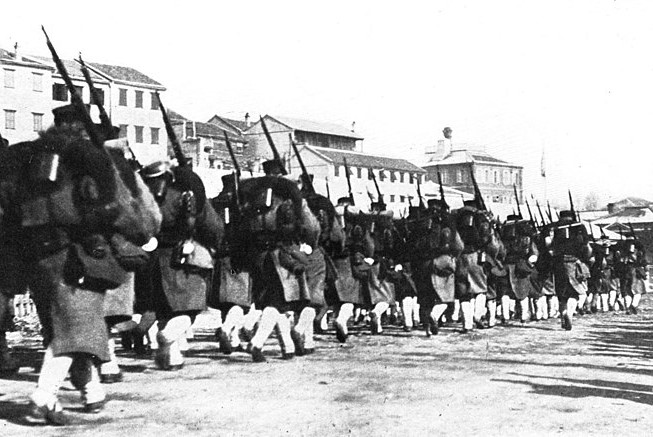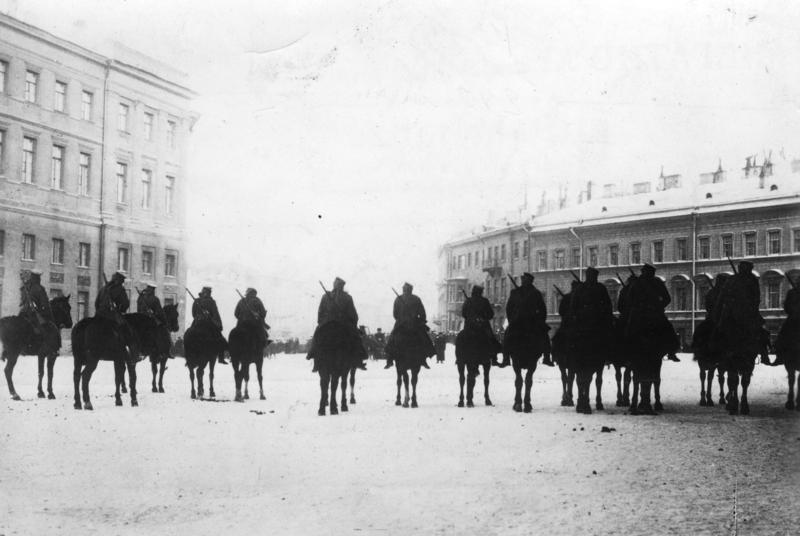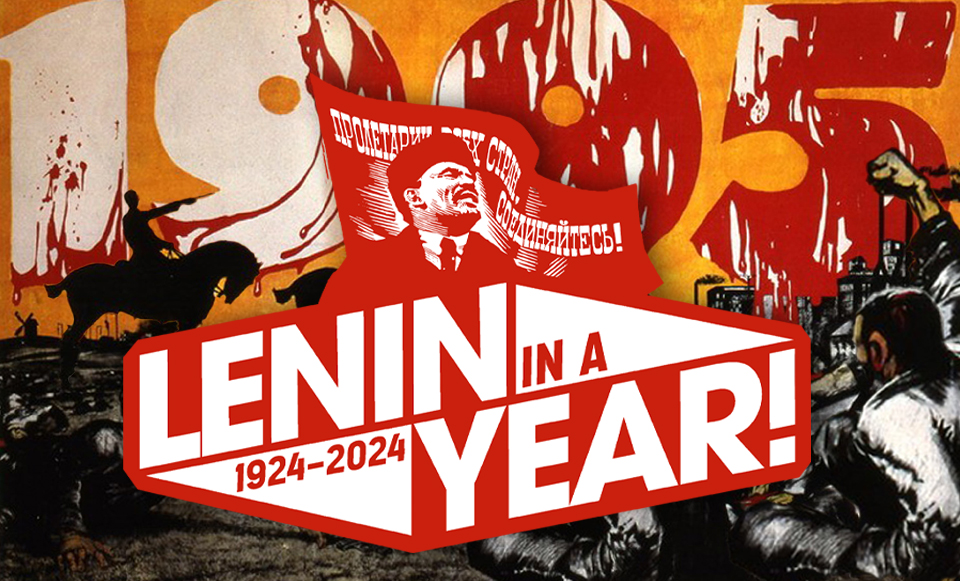When divisions among Russian Marxists between ‘Bolsheviks’ and ‘Mensheviks’ first emerged at the second congress of the RSDLP in 1903, they remained confined to secondary differences over organisational questions. Only with the 1905 Revolution did real political differences emerge, as Lenin explained in his brilliant pamphlet of that year, Two Tactics of the Social-Democracy in the Democratic Revolution. More than anything else, war and revolution bring out political differences with crystal clarity.
The significance of the 1905 Revolution cannot be understated in the development of Bolshevism and of Lenin’s thinking. Lenin stated more than once that the October Revolution of 1917 would have never succeeded without this earlier experience.
1905 was a year of extreme crisis and turbulence. The Russo-Japanese War of 1904-5 rapidly exposed the inner rottenness of Tsarism that suffered humiliating defeats. This only added to the already existing hatred for the regime.
On 16 January 1905, a strike broke out at the Putilov workers and began to spread rapidly throughout the country. By 20 January, a general strike was under way involving 456 enterprises with up to 150,000 workers.
The young working class went into an all-out struggle with tsarism that sidelined the liberal opposition in the process. “People were awakened to political consciousness for the first time”, explained Lenin.
No one had foreseen that Russia would be shaken by such explosions. The Bolshevik organisation inside Russia was initially wrong-footed. The Russian Social Democratic Party (RSDLP) split at the Second Congress of 1903, but many comrades of the party were still as yet confused as to the real nature of this split.
 The Russo-Japanese War of 1904-5 rapidly exposed the inner rottenness of Tsarism / Image: public domain
The Russo-Japanese War of 1904-5 rapidly exposed the inner rottenness of Tsarism / Image: public domain
After the first shocks of the revolution, preparations for the Third Congress were made, which was organised in London in April 1905. This was exclusively a Bolshevik congress as the Mensheviks stayed away.
In Two Tactics, Lenin covers the importance of the Third Congress. He explains how a revolutionary party must make its position very clear on the following questions: 1) the significance of a provisional revolutionary government; 2) its attitude towards a provisional revolutionary government; 3) the precise conditions of Social-Democratic participation in this government; 4) the conditions under which pressure is to be brought to bear on this government from below, i.e., in the event of there being no Social-Democrats within it.
Going over these questions, Lenin was able to bring out the fundamental political differences between the Bolsheviks and Mensheviks, which centred around the main point: which class would lead this bourgeois revolution? The Mensheviks increasingly demonstrated their illusions in the Russian liberal bourgeoisie. They laid heavy stress on their leading role. They counter-posed two ‘tactics’: either the Marxists wait for the Tsar to call a Duma (i.e. semi-parliament) and then try to ‘influence’ it; or the Marxists should lead the struggle for an armed insurrection of the working class.
The latter, they claimed, was impossible. They raised excuses about how the working class “is not yet sufficiently class conscious”, and that an insurrection would “isolate” the workers from the bourgeoisie. According to the Mensheviks only the bourgeoisie can lead the bourgeois revolution to a decisive victory over tsarism. Their choice of ‘tactics’ therefore involved complete subordination of the working class to the liberal bourgeoisie.
But the liberal bourgeoisie, through its mouthpiece Osvobozhdeniye [‘Liberation’], was not arguing for a republic and the overthrow of Tsarism, but only a constitutional monarchy. I.e. it was preparing to compromise with Tsarism, as it was more afraid of the revolutionary movement of the workers that had been unleashed than it was interested in gaining power for itself. In Two Tactics, Lenin explains why this is a fundamental mistake;
“[We Marxists] must be perfectly clear in our minds as to what real social forces are opposed to “tsarism” and are capable of gaining a “decisive victory” over it. Such a force cannot be the big bourgeoisie, the landlords, the factory owners, “society” which follows the lead of the Osvobozhdentsi. We see that these do not even want a decisive victory. We know that owing to their class position they are incapable of waging a decisive struggle against tsarism; they are too heavily fettered by private property, capital and land to enter into a decisive struggle. They need tsarism with its bureaucratic, police and military forces for use against the proletariat and the peasantry too much to be able to strive for its destruction.”
He concludes:
“No, the only force capable of gaining “a decisive victory over tsarism,” is the people, i.e., the proletariat and the peasantry, […] No one else is capable of gaining a decisive victory over tsarism.”
Lenin argued strongly for this, and put forward the slogan of “the dictatorship of the proletariat and the peasantry” – i.e. a revolutionary, democratic regime of the plebeian and working masses.
This was in stark contrast to the position of the Mensheviks who stopped at merely adopting the most widespread slogans, such as the call for a popular constituent assembly, which even the monarchist bourgeoisie supported. This flowed from their false perspectives.
Lenin warned about this, saying “There is nothing more dangerous in a revolutionary period than belittling the importance of tactical slogans that are sound in principle.”
The Mensheviks imposed their abstract schema onto reality. They started from the indisputable fact that in Russia, the main tasks of the revolution were bourgeois: i.e. the overthrow of autocracy and the creation of a democratic regime. But they drew from this the radically false conclusion that the revolution must be led by the bourgeoisie, despite the fact that the latter had shown their fear and hatred of the revolution.
The Mensheviks were utterly incapable of understanding the real class dynamics. Lenin explained that beyond a mere change from autocracy to a republic, the bourgeois revolution above all signifies an agrarian revolution, in which the land must be seized from the landlords and redistributed to the peasantry.
Seen from this angle, Lenin explained, we can see how the Russian bourgeoisie could never support such a revolution. They had too many interests connecting them to landed property: the capitalists were also big landowners, and were connected to the landlords via the mortgages that the latter had with the banks. To push forward a thorough agrarian revolution, the party had to lead the proletariat into a revolutionary alliance with the rural peasantry. But the Mensheviks had no desire to lead the proletariat at all. They merely dragged at the tail of events.
Lenin expressed his frustration in the text:
“…we are offered a general description of a process, which does not say a word about the concrete aims of our activity.
“The philosophers have only interpreted the world, in various ways, said Marx, the point, however, is to change it. Similarly, the new-Iskraists [i.e. the Mensheviks] can give a tolerable description and explanation of the process of struggle which is taking place before their eyes, but they are altogether incapable of giving a correct slogan for this struggle.”
Through Lenin’s deep understanding of the material conception in history he remained firm on the principles of Marxism, and the need for the proletariat to have its own independent party and programme.
It’s important to note that at this time Trotsky was developing his own analysis of events in parallel to Lenin, which had important points of contact with the ideas of the latter. Trotsky fully worked out what became the theory of permanent revolution in his work “Results and Prospects”, which was published in 1906.
 The Mensheviks were utterly incapable of understanding the real class dynamics / Image: public domain
The Mensheviks were utterly incapable of understanding the real class dynamics / Image: public domain
Trotsky agreed with Lenin that the bourgeoisie was destined by its position to play a counter-revolutionary role, and he likewise emphasised that only the proletariat and peasantry could play a revolutionary role. But he went further, explaining that of the two classes, only the proletariat could play the leading role. Therefore, whereas Lenin raised the somewhat algebraic slogan of “the democratic dictatorship of the proletariat and peasantry”, which left open the question of the role that these two classes would play, Trotsky posed the possibility that the revolution in Russia could establish a socialist regime of the dictatorship of the proletariat. This perspective was proven correct by the events of 1917.
The aim of this worker’s government would be to carry out the tasks of the bourgeois democratic revolution, such as land reform, resolution of the national question and establishing a republic. However, once accomplished, the worker’s government would not stop there, but would be forced to immediately proceed towards socialist tasks – nationalising the property of the counter-revolutionary bourgeoisie, instituting workers’ control, national planning, etc.
From here, Trotsky explained that the socialist revolution would spread and be completed on the world stage. Although in Two Tactics, Lenin did not yet pose the possibility of the Russian Revolution growing over from a bourgeois into a socialist revolution, he too posed the possibility that the Russian Revolution might “carry the revolutionary conflagration into Europe”. In short, both Lenin and Trotsky based everything on an internationalist perspective, in contrast to the anti-Marxist theory of ‘socialism in one country’ espoused by the Stalinists who falsely claim to stand in the tradition of Lenin.
By 1917, Lenin converged on the same perspective as Trotsky. From this time on, he dropped the slogan of the “democratic dictatorship of the proletariat and peasantry”, first raised in Two Tactics, on account of the changing situation, and adopted “the dictatorship of the proletariat” instead.
Only later, after Lenin’s death, did Stalin revive Lenin’s old slogan of a “democratic dictatorship”. But he did so only to counter-pose it to the idea of a socialist dictatorship, as a step backwards towards justifying the counter-revolutionary foreign policy of Stalinism. This was a policy of precisely subordinating the workers’ movement in oppressed colonial nations to the leadership of the national bourgeoisie as we saw in 1925-27 in China, and on a host of later occasions. In other words, the same slogan, raised at a time when it had become antiquated, was used precisely in the opposite spirit in which it was intended in Lenin’s Two Tactics.
This pamphlet was a watershed moment in the development of Bolshevism. It was in this period when the political differences between Bolshevism and Menshevism, between revolution and reformist opportunism, were solidified. Through this text, we gain a real insight into Lenin’s method of thinking. Whereas the Menshevik faction merely contented itself with analysing the situation and allowing events to take their ‘natural’ course (that is to say, they surrendered leadership of the revolution to the liberals), Lenin’s brilliance lay in charting a line of revolutionary action at a historical juncture that was without precedent.
This is what set the Bolsheviks on the right path which ultimately led to the victory of the Bolshevik revolution in 1917.
Next time in the series, Lenin in a Year, we move forward to 1908. The 1905 Revolution has suffered a terrible defeat; confusion and demoralisation reign among the workers and oppressed of Russia. In a time of ideological backsliding, Lenin produced a masterpiece of Marxist philosophy to defend the fundamental ideological principles of the movement, Materialism and Empirio-criticism.


